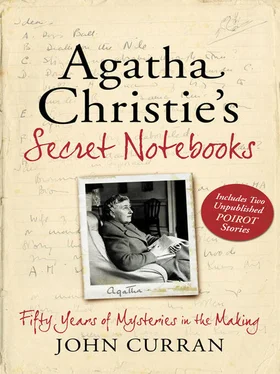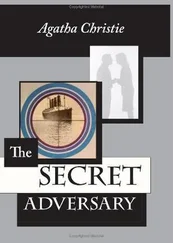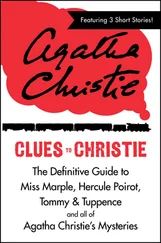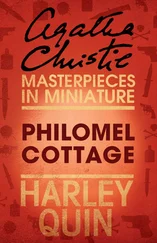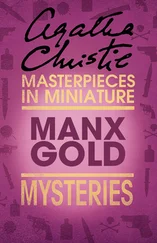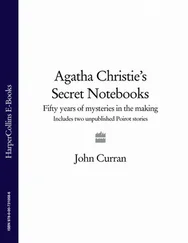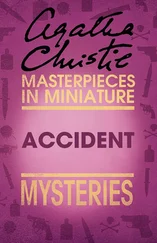Throughout the notes Christie continued trying to fit her ingenious plot into the plan of the nursery rhyme:
1—2
Miss S going to dentist
Mr Mauro
Miss Nesbit
Mr Milton
H.P. in waiting room—shoe buckle—loose—annoys him
3—4
Japp comes—P. goes with him—interview partner’s wife?—secretary etc.
5—6
The body—evidence of identity destroyed—but identified from clothes. Mrs Chapman’s flat—the shoes—either a buckle missing or one found there
9—10
Julia Olivera—married not in love—Aunty Julia—‘the daughter is attractive’
11—12
Men Must Delve—dentist’s secretary had been crying because young man has lost his job. In garden next morning—the gardener—P goes round a bush—Frank Carter—digging
13—14
Mrs Adams—that conversation—then—in park Jane and Howard
15—16
Final Maids in the Kitchen touch—one of the maids upstairs looked over—saw Carter—watched Carter went in—saw dentist dead
17—18
Miss Montressor—dark—striking—gardening—her footprint in bed
19—20
P outlines case—smart patent new shoe—foot and ankle strap—buckle torn off. Later woman found—shoe and buckle sewn on. It was a woman’s shabby shoe—other was new
But it just doesn’t work. The early sections—the buckle, picking up sticks (clues) and laying them straight (interpreting them)—are acceptable. But the gardening motif (‘men must delve’) and the maids looking over the banisters are simply unconvincing. The dauntingly clever plot does not need this window-dressing and the book can stand, without any references to the rhyme, as a supreme example of detective fiction.
If, however, any further proof were necessary of the ingenuity and fertility of Agatha Christie, a glance at almost any page of Notebook 35 would supply it. The following ideas are scattered throughout the notes for One, Two, Buckle my Shoe. None of them was used.
Idea of two women—one criminal working with man goes to dentist—simply in order to give man alibi
Harvey—rich, unscrupulous—married to young wife—a widow when he married her—had she murdered first husband?
Or Double suicide man and woman—one of them not the person—therefore suicide not murder—dentist could have identified her
M. wants to get rid of someone—(his wife?) therefore he kills his wife and another man but it proves not to be his wife but another woman
Four and Twenty Blackbirds March 1941
Poirot investigates the mysterious death of an elderly man when his suspicions are aroused—by the man’s diet.
The title of ‘Four and Twenty Blackbirds’ appears for the first time in Notebook 20:
4 and 20 blackbirds
Located ahead of Christie’s reminder to herself (‘To be added—Sketch of Leatheran career—Chapter II’) to amend Murder in Mesopotamia, this dates it to the mid-1930s, at least six years before the story first appeared. A rough sketch of the story itself appears in Notebook 66 just ahead of a sketch for ‘Triangle at Rhodes’:
Impersonation of old man—he eats a different meal on the Tuesday—nothing else noticed. Died later.
Mr P Parker Pyne—They talk—points out elderly man with a horn beamed and spectacles eye-glass—bushy eyebrows
Old fellow hasn’t turned up—waiter says he is upset—first noticed it a fortnight ago—when he wouldn’t have his jam roll—had blackberry tart instead. Sees body—teeth—no blackberry tart. Empty house—fell downstairs—dead—open letter
There is one particularly surprising aspect of the jottings in Notebook 66—the allocation of this case to Parker Pyne instead of Hercule Poirot. In fact this change could be quite easily imagined; this is not one of the more densely plotted Poirot stories, and it is probable that market forces dictated the substitution of the Belgian. And as we shall see, this is not an isolated example of the interchangeability of characters.
It has to be said that the connection to the nursery rhyme is very tenuous. For the purposes of the story the blackbirds of the rhyme become blackberries: the main clue is the lack of discoloration of the victim’s teeth (‘Sees body—teeth—no blackberry tart’) despite the fact that he was seen to eat blackberry pie shortly before his supposed death. The rather obvious disguise is the other important element of the tale. A more fitting title is that used on the story’s first US appearance in Colliers Magazine in November 1940, ‘The Case of the Regular Customer’.
Five Little Pigs 11 January 1943
This little piggy went to market
This little piggy stayed at home
This little piggy ate roast beef
This little piggy had none
This little piggy cried wee-wee-wee all the way home.
Carla Lemarchant approaches Hercule Poirot and asks him to vindicate her mother, who died in prison 16 years earlier while serving a sentence for the murder of her husband. Poirot approaches the five other suspects and asks them to write accounts of the events leading up to the fatal day.
Published in the UK in January 1943, having already appeared in the US six months earlier, Five Little Pigs is the apex of Christie’s career as a detective novelist; it is her most perfect combination of detective and ‘straight’ novel. The characters are carefully drawn and the tangle of relationships more seriously realised than in any other Christie title. It is a cunning and scrupulously clued formal detective novel, an elegiac love story and a masterly example of story-telling technique with five individual accounts of one devastating event. And in this novel at least, the use of the admittedly short rhyme is not forced. Each of the five main characters is perfectly reflected in the words of the verse. And perhaps because there are no further verses, the analogy does not seem strained (as, for instance, it does in the case of One, Two, Buckle my Shoe ). But, as the Notebooks reveal, the journey to the book we now know was neither straightforward nor obvious.
From the technical point of view the test Christie sets herself in this novel is daunting. As well as the 16-year gap between the crime and its investigation she limits herself to just five possible murderers. Seven years earlier she had first experimented with the device of a small circle of suspects; in Cards on the Table she limits herself to just four bridge-players. She attempts a similar problem with Five Little Pigs, although this time she allows herself some physical clues in the shape of a glass, a beer bottle and a crushed pipette.
It is also the greatest of Christie’s ‘murder in the past’ plots. In fact if we don’t count Dumb Witness —the investigation of a two-month-old murder—it is also the first of such plots. Alderbury, the scene of the crime, is based closely on Christie’s own Greenway House and the geography of the story corresponds exactly with its grounds. The Battery, where Elsa poses on the battlements and watches her lover die, looks out over the River Dart and the path where the crushed pipette is found leads back up to Greenway House.

This map from Notebook 35 shows the murder scene in Five Little Pigs with the Boathouse on the left (also the scene of a murder in Dead Man’s Folly), Greenway House in the top right-hand corner, and the positions of Miss W(illiams) and C(aroline). The photo of the Battery from the time of writing shows the wall where Elsa posed.
Читать дальше
Конец ознакомительного отрывка
Купить книгу
